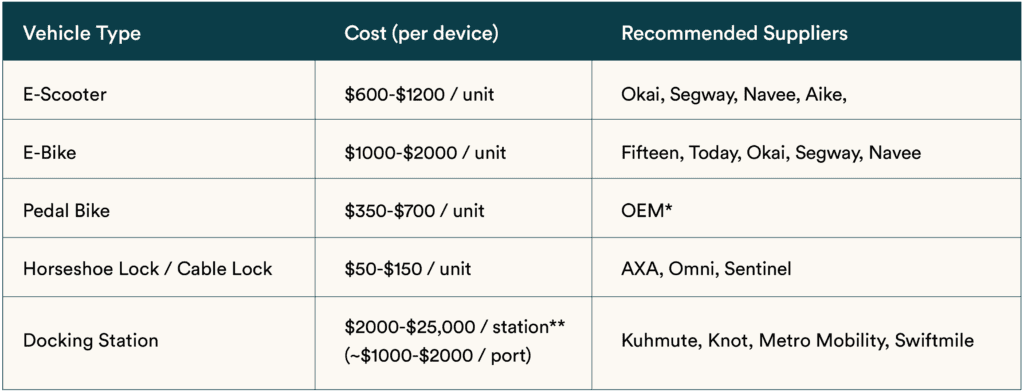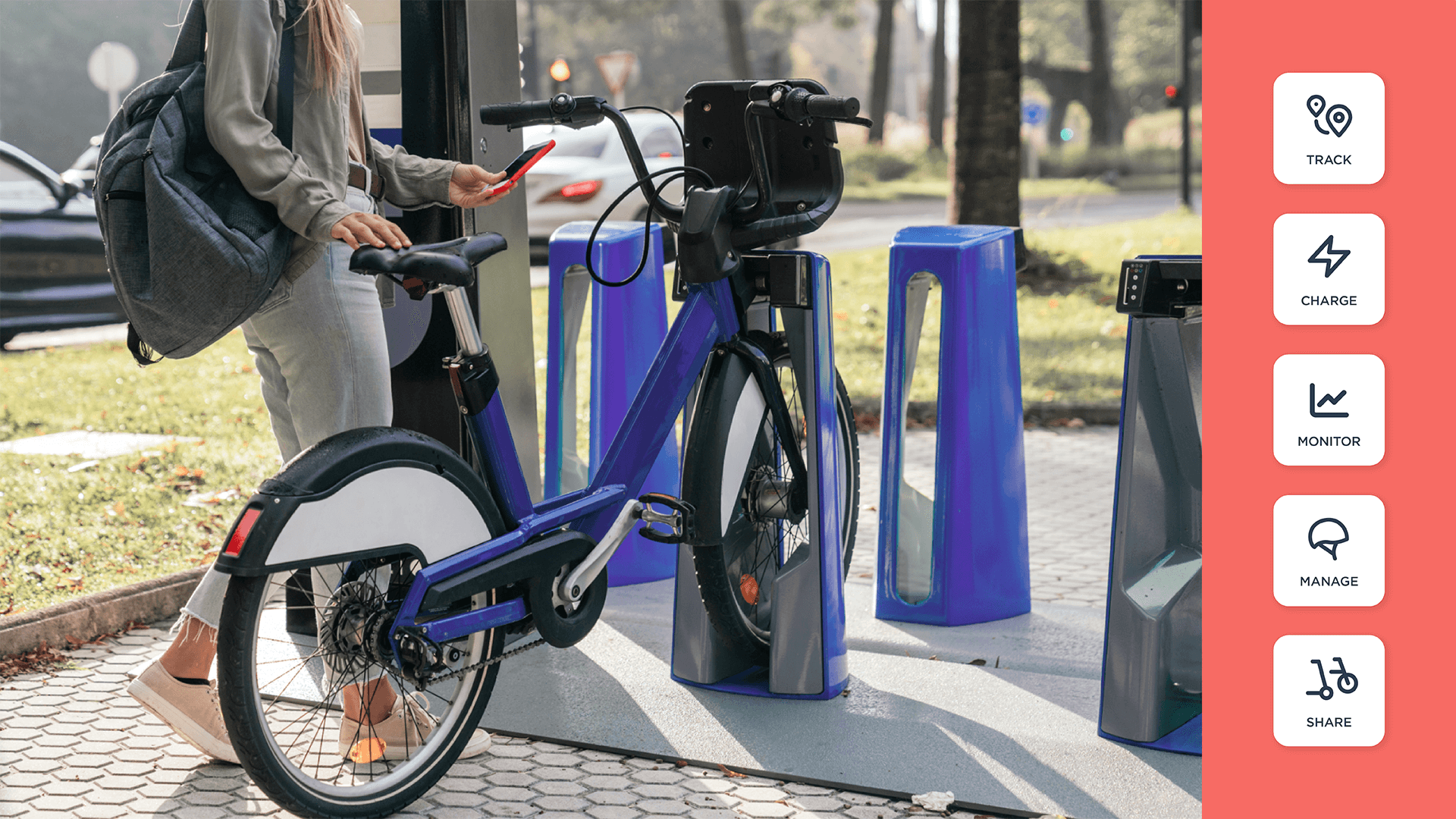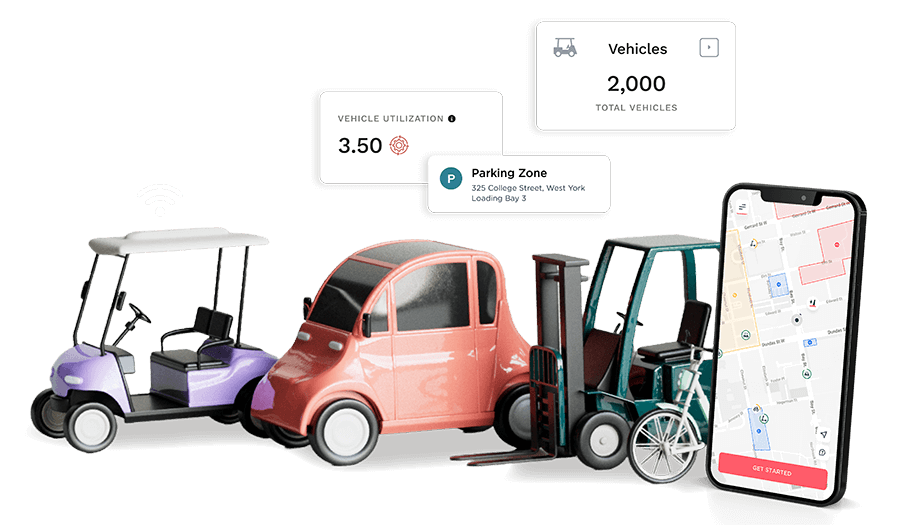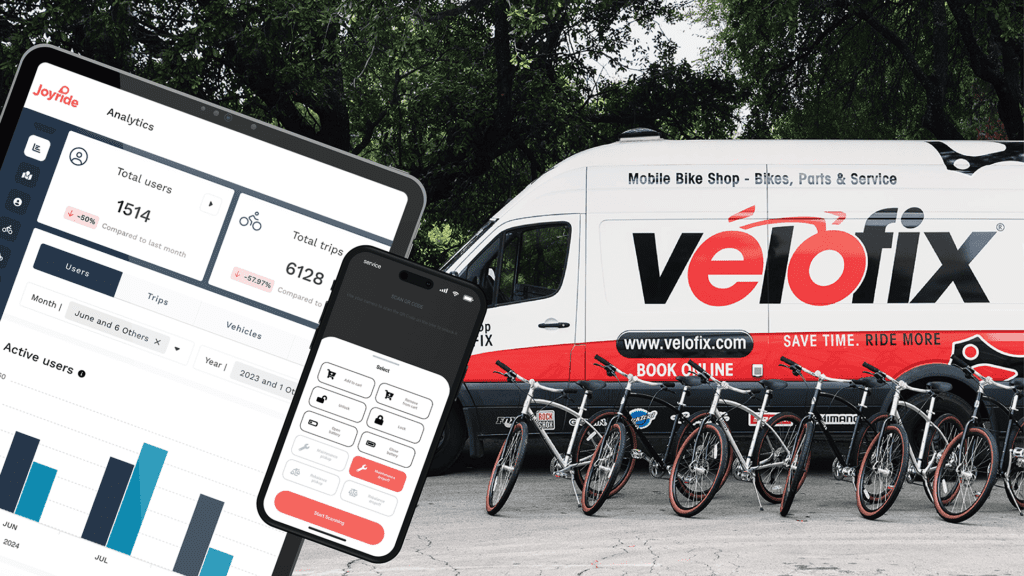In the first installment of our campus shared mobility series, we explored how to make university and college transportation ‘smart’ with private electric scooters, e-bikes and mini LSVs.
The global shared mobility market is set to reach $340 billion by the class of 2030, with rising e-bike demand and new use cases for mini electric vehicles driving the surge. The appeal of micro- and minimobility transportation for students and administration is clear. Now, let’s dive into the practicalities.
This article discusses what makes a university-run system succeed, including the importance of adequate infrastructure, costs and sources for fleet vehicles, and how to effectively manage operations and maintenance. It will also help you overcome the two biggest mistakes that come along with campus mobility:
On-campus fleets, in-house management
Vehicle-sharing on campus isn’t a new concept. Around the world, colleges and universities have offered various forms of bike and car lending programs for decades. The success of the programs, however, has historically been impacted by insufficient funding, high operating costs and unengaged ridership.
To avoid similar potential pitfalls, universities and colleges must steer clear of purchasing poor-quality equipment and ineffective fleet management practices.
Mistake 1: Purchasing poor quality equipment
If the university has opted to manage their fleet in-house, purchasing or leasing fleet vehicles will be the largest upfront investment. Whether it’s electric scooters, e-bikes, golf carts, or a multi-modal mix of vehicles, high-quality vehicles built for sharing purposes offer several benefits that directly impact the overall effectiveness of the program.
The same goes for all shared mobility equipment, such as charging stations, swappable batteries and smart locks. Unreliable hardware is more susceptible to breakdowns, safety hazards and shorter lifespans, leading to increased maintenance costs and service downtime.
Why is this important? A single bad experience can erode user trust and satisfaction, discouraging students from using the service again.
As of 2024, expect to pay the following for high-quality equipment purpose-built for sharing:

*For pedal bike fleets, the vehicle market is limited for commercial sharing-ready options. If desired, the minimum order quantity would be 400+ units; please contact our Joyride Garage specialists, who can facilitate such custom orders from reputable OEMs
**prices vary greatly depending on the number of ports and whether the station is a simple locking mechanism or requires a power supply for charging vehicle batteries.
Professional fleet procurement for colleges and universities
Keep in mind that the higher the order quantity, the lower the unit price will be, and that most Original Equipment Manufacturers (OEMs) have a minimum order quantity (MOQ) for shipping overseas. Contacting an OEM is the most direct way to place a large vehicle order, however, time zone differences and incoterms can be difficult to manage.
The good news is that it’s never been easier to purchase shared mobility equipment. Joyride Garage gives you a direct channel to qualified and professional sellers of fleet products and can assist with procuring the exact number of vehicles, stations and helmets needed for a university shared mobility fleet.
Mistake 2: Ineffective fleet management
With reliable vehicles ready to go, the second threat to the success of university shared mobility is ineffective fleet management. Without robust systems in place to monitor vehicle health, track usage patterns and optimize fleet distribution, program administrators may struggle to predict demand, leading to overcrowded or underused vehicles.
Public scooter-sharing companies learned this the hard way–but you don’t have to.
To fully realize the value of a high-quality hardware investment, it’s equally important to invest in a robust software platform. Insights provided by a fleet management dashboard will ensure that the vehicles are well-maintained, charged and, most importantly, available where students need them most.
One critical aspect of fleet management is rebalancing, which involves strategically redistributing vehicles throughout the campus. While initial deployments of parking zones and charging stations may rely on educated guesses, manual processes won’t cut it in the long term.
By leveraging trip analytics and heatmaps to analyze data on usage patterns, peak hours and popular locations, administrators can pinpoint areas where vehicles are in high demand and adjust their distribution accordingly.
Maintenance also plays a crucial role in fleet management, as regular upkeep is essential to keep vehicles operating safely and efficiently. Implementing a proactive maintenance schedule, which includes routine inspections, repairs and battery swaps, helps to prolong the lifespan of the fleet.
By focusing on both hardware and management excellence, universities are better positioned to run in-house shared mobility programs, and can even outperform a third-party provider.
Get Smart with Shared Mobility on Campus
If you’re eager to kickstart your campus’s shared mobility journey, now is the time to enroll in our free University Shared Mobility Guide on Joyride Academy.
Think of it as your own personal “post-secondary institution” for navigating the world of small electric vehicles. With two chapters of content from expert contributors, you’ll graduate ready to implement and optimize your campus’s transportation solutions.
Don’t just study the trends—join Joyride Academy today and pave the way for a campus on the move!

FREE JOYRIDE ACADEMY COURSE
How to Manage a College or University Shared Mobility System
Get practical tips, case studies, and step-by-step processes to manage a fleet of electric scooters, bikes, golf carts, or mini cars.







